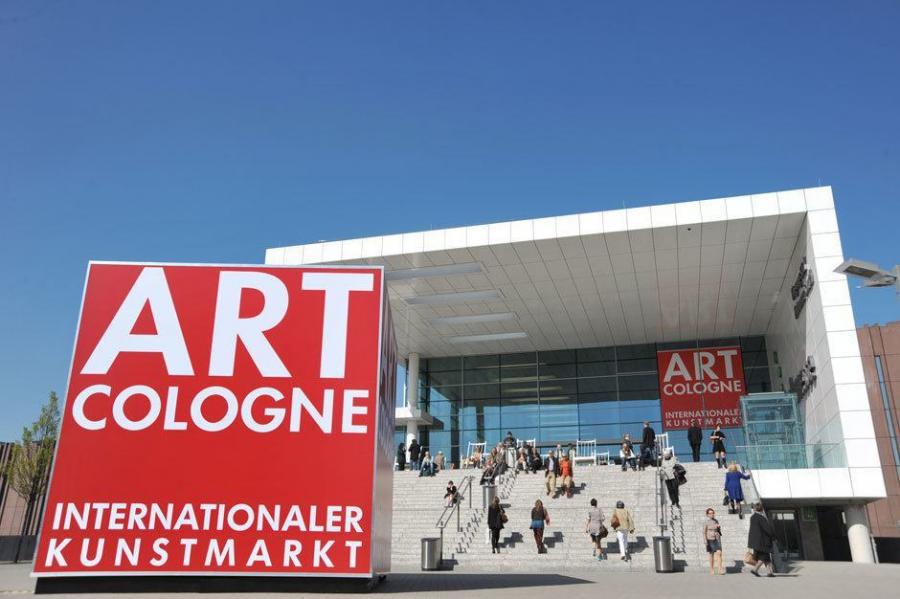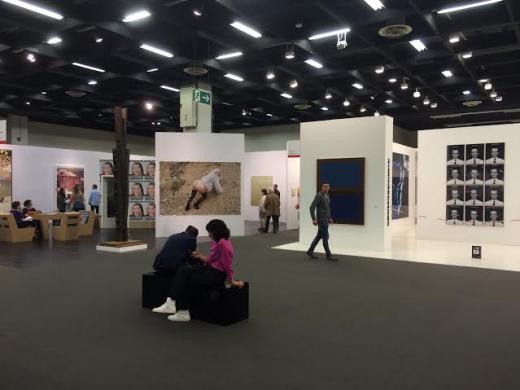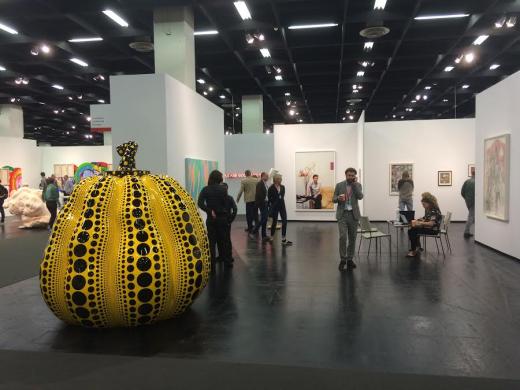50th Art Cologne
50th Art Cologne

Kasper König is dancing. It’s the evening of the preview day of the 50th anniversary of Art Cologne, all exhibitors are invited to the traditional “Ausstellerabend” at the historic Gürzenich for dinner and drinks. The band is playing to a half-empty hall, it’s still early in the night, but König doesn’t care. Art Cologne and the Rhineland might not be the centre of the (Western) art world anymore, but the locals and oldtimers from the institutions, galleries and art media don’t seem to mind. They show what they’ve got and they are proud of it. The same is true for most of the booths at next day's official Art Cologne opening: the top dogs are protecting their turf with expectedly high standard presentations and works, while the younger galleries are struggling to keep up.
In the modern and post-war art section, Galerie Thomas from Munich is presenting beautifully selected small paintings, prints and multiples by Chagall, Kandinsky, Beuys and others in a special display. They were awarded this year’s Art Cologne prize for being at the fair every year of its 50-years history. Nice for them, but some people are actually treating this as something to which the word “news” applies.



The main floor of the fair is dominated by the galleries for contemporary art that grew big together with Art Cologne, like Buchholz and Zwirner, next to big players like Hauser & Wirth, Sprüth Magers and Contemporary Fine Arts (CFA). Zwirner is presenting a lovely corner of two works by Isa Genzken together with the photograph Isa Mona Lisa by Wolfgang Tillmans. CFA has incorporated the Retrospektive of works by Christian Jankowski in form of a karaoke booth into it’s fair architecture that is attracting quite some attention, which might also be because of the infamous picture of Kim Kardashian by Juergen Teller in the front, greeting visitors already from afar.
And then there are all the “new” things in capital letters. NEW POSITIONS, NEW CONTEMPORARIES, COLLABORATIONS. Too many labels for too many things, in the end it comes down to a very varied selection of quality and styles, with galleries like Supplement from London and Future Gallery from Berlin showing works that seem to be the most contemporary and could be called post-internet, if that term was still fashionable.
From the NEW POSITIONS galleries, the Produzentengalerie Hamburg really stands out, with a presentation by Czech artist Monika Michalko and works by Ulla von Brandenburg and Astrid Klein. In the COLLABORATIONS section, the presentation of KOW together with Kraupa-Tuskany Zeidler has lead to some nice pairings of works and a joint-installation by Daniel Keller and Eila Plevin. Another noteworthy contribution is the booth by Cologne’s art school KHM – Kunsthochschule für Medien, with works by students and alumnae like Sara Hoffmann, Andreas Wißkirchen and Julius Brauckmann that really don’t have to shy away from the comparison with works by already more established artists in the fair.
So there is something to be said for the localness of this oldest of modern art fairs. This might not be and never will be Basel, New York or Hong Kong, so less Champagne and more Kölsch, but still they are all dancing, not just when nobody’s watching.